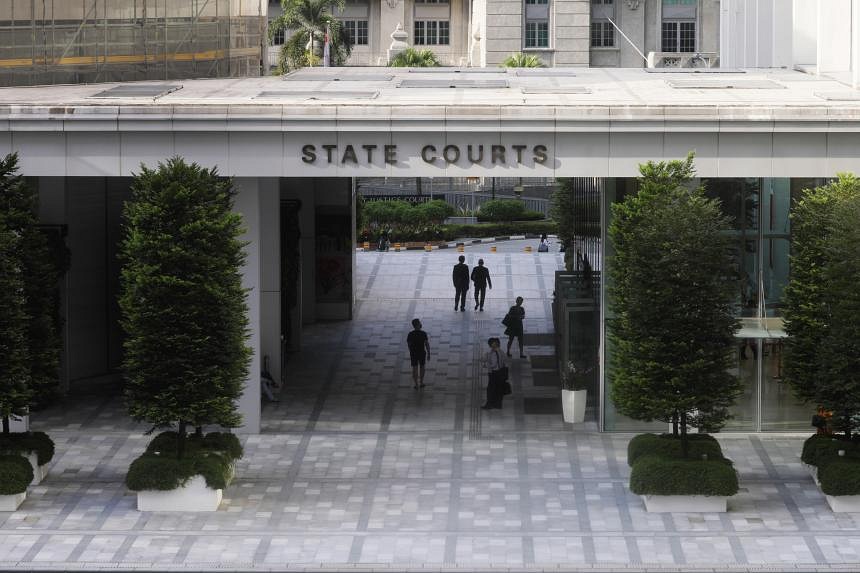SINGAPORE - The rental boom in recent years has led to a jump in landlords and tenants resorting to legal avenues to settle their disputes.
In 2023, the Small Claims Tribunals (SCT) received 1,510 claims related to tenancy disputes – a 62 per cent increase from the 930 cases lodged in 2019, before the Covid-19 pandemic.
The number of claims has risen yearly since 2019, with 1,063 claims lodged in 2020, 1,104 in 2021 and 1,114 in 2022.
About one in three SCT cases filed between 2019 and 2023 that involved tenancy disputes concluded with an order by the tribunal, said a Singapore Courts spokesman.
The remaining cases were either dismissed, discontinued or withdrawn, he added.
The SCT, established in 1985 and part of the State Courts, is the avenue to resolve various small claims of up to $20,000, including disputes arising from residential tenancy agreements of up to two years. The claim limit can be raised to $30,000 if both parties agree.
Lawyer Rajan Supramaniam, a certified mediator at the State Courts who mediates cases at the SCT, attributed the rise in tenancy disputes to increased awareness of legal rights among both tenants and landlords, as well as a growing reliance on housing agents for advice.
“The housing agents tend to side with their own clients and try to advise them about their rights. I have seen many instances where the housing agents did not give fair advice, hence the matter escalated to the SCT,” said Mr Supramaniam.
Some market observers also noted that the surge in demand for rental units – driven by pandemic-induced delays in the construction sector – had led to higher rental fees, and landlords being reluctant to negotiate when issues arise.
Mr Supramaniam, who is from Regent Law, said tenancy disputes encompass various issues, including security deposit disputes, damage to property, early contract termination and unpaid rent.
He highlighted security deposits as a common point of contention, with landlords seeking to offset repair costs against deposits due to tenant breaches.
Rental demand for private residential properties over the last five years peaked in 2021, with 98,604 units leased out. More than 90,000 units (excluding executive condominiums) were leased annually from 2019 to 2022, data from the Urban Redevelopment Authority showed. The number of leasing contracts dropped to 82,257 in 2023 as the rental market cooled.
In comparison, the number of HDB rentals fluctuated in the last five years. There were 48,195 flats rented out in 2019, 38,798 in 2020, 42,623 in 2021 and 36,166 in 2022. In 2023, 39,138 flats were leased out.
One landlord recounted her frustration in dealing with a tenant who continually fell behind on rent for almost a year.
She engaged a lawyer to approach the tenant, and subsequently filed a claim with the SCT.
The first-time landlord, who spoke on the condition of anonymity, said she had tried to repossess her property as the tenant breached the contract by making payments late and defaulting on rent.
“My lawyer had advised a peaceful re-entry into my property as per the terms of the tenancy agreement. But it was only when this unfortunate incident happened that I learnt the hard way that there was nothing I could do if the tenant stays put.
“The police will get involved only if there is a court order for eviction, and it takes several months to obtain one,” said the landlord, who is in her 30s and works in the banking industry.
“So I was completely at the mercy of the errant tenant to leave and thankfully, she did.”
Property agents like Ms Alice Loo from Huttons Asia often find themselves mediating disputes over issues such as wear and tear. Such disputes can escalate when landlords and tenants disagree on liabilities for damages.
Ms Loo noted that landlords and tenants often disagree over what is common wear and tear of the property.
She recounted a recent case in which the tenant’s children drew on the walls of the unit, and the tenant said this should be considered wear and tear.
“I told the tenant that it is not wear and tear when your children draw on the walls. With all the drawings on the walls, how is the landlord going to be able to lease it out,” she said, adding that the tenant was unwilling to paint the house.
The landlord eventually deducted $1,000 from the tenant’s deposit.
She also cited instances when landlords wanted to replace cabinet drawers as they claimed the drawer tracks and slides were loose, or to repair scratched parquet flooring. Agents would have to mediate and try to help both parties come to an agreement, added Ms Loo.
Mr Supramaniam said efforts are made to reach an amicable settlement during mediation, although some disputes may require further legal action.
Given the rising number of tenancy disputes, legal experts stressed the importance of meticulous documentation of the condition of properties and drafting of tenancy agreements.
Mr Viveganandam Devaraj, managing director of Lions Chambers LLC, highlighted the lack of clarity regarding fair wear and tear in many cases, and suggested that clear photographic evidence could strengthen a landlord’s case in demonstrating a tenant’s negligence in property upkeep.
He also advised landlords to include specific clauses in tenancy agreements outlining tenant responsibilities, as generic clauses often prove ineffective in resolving disputes.
Experienced landlords, he noted, typically enlist the help of lawyers to draft their agreements.


